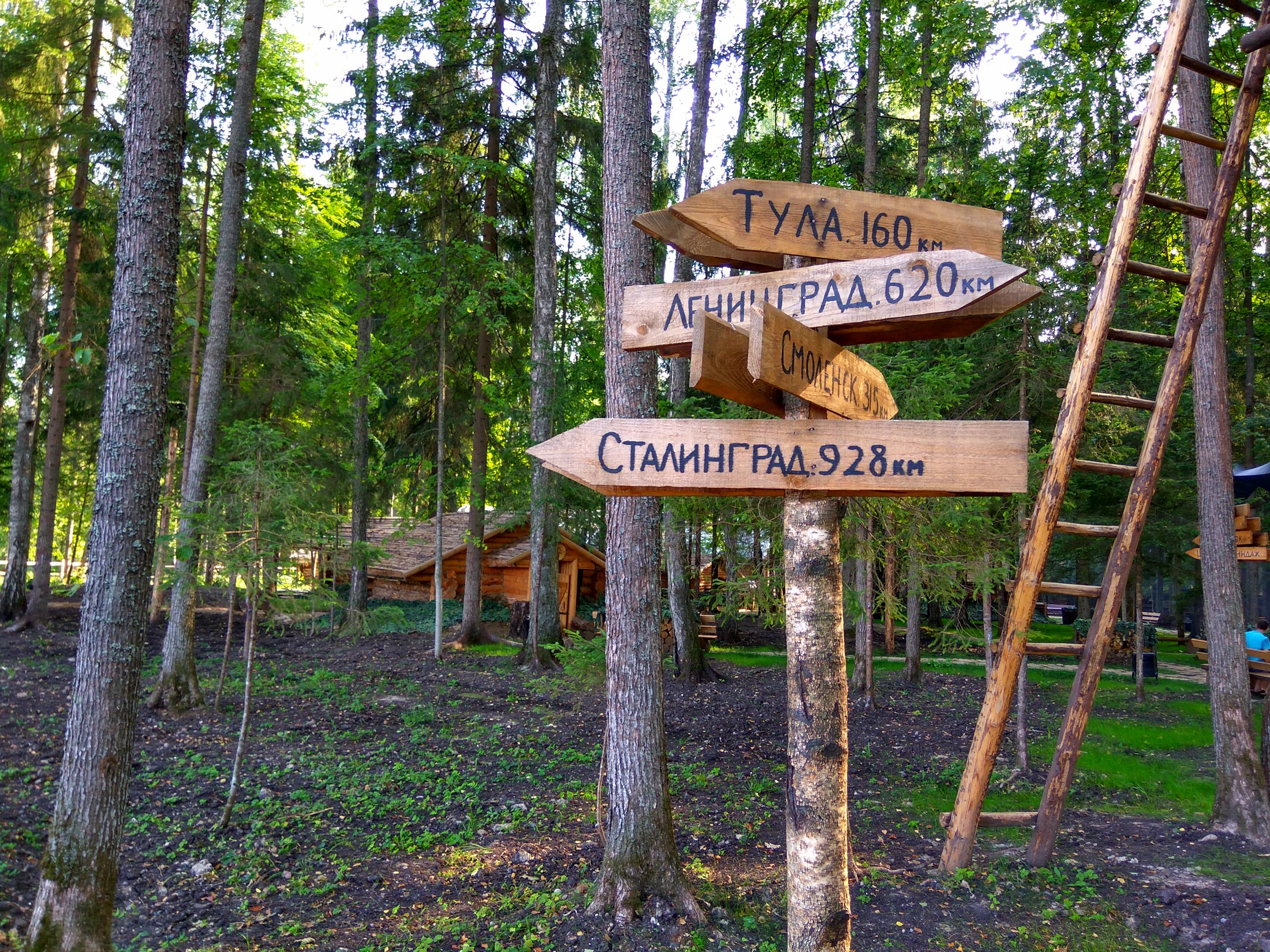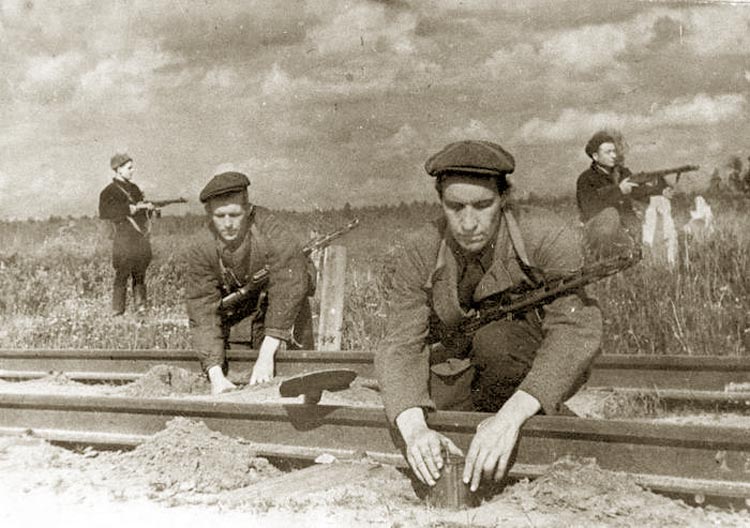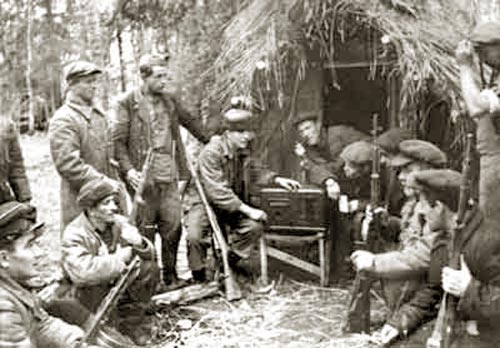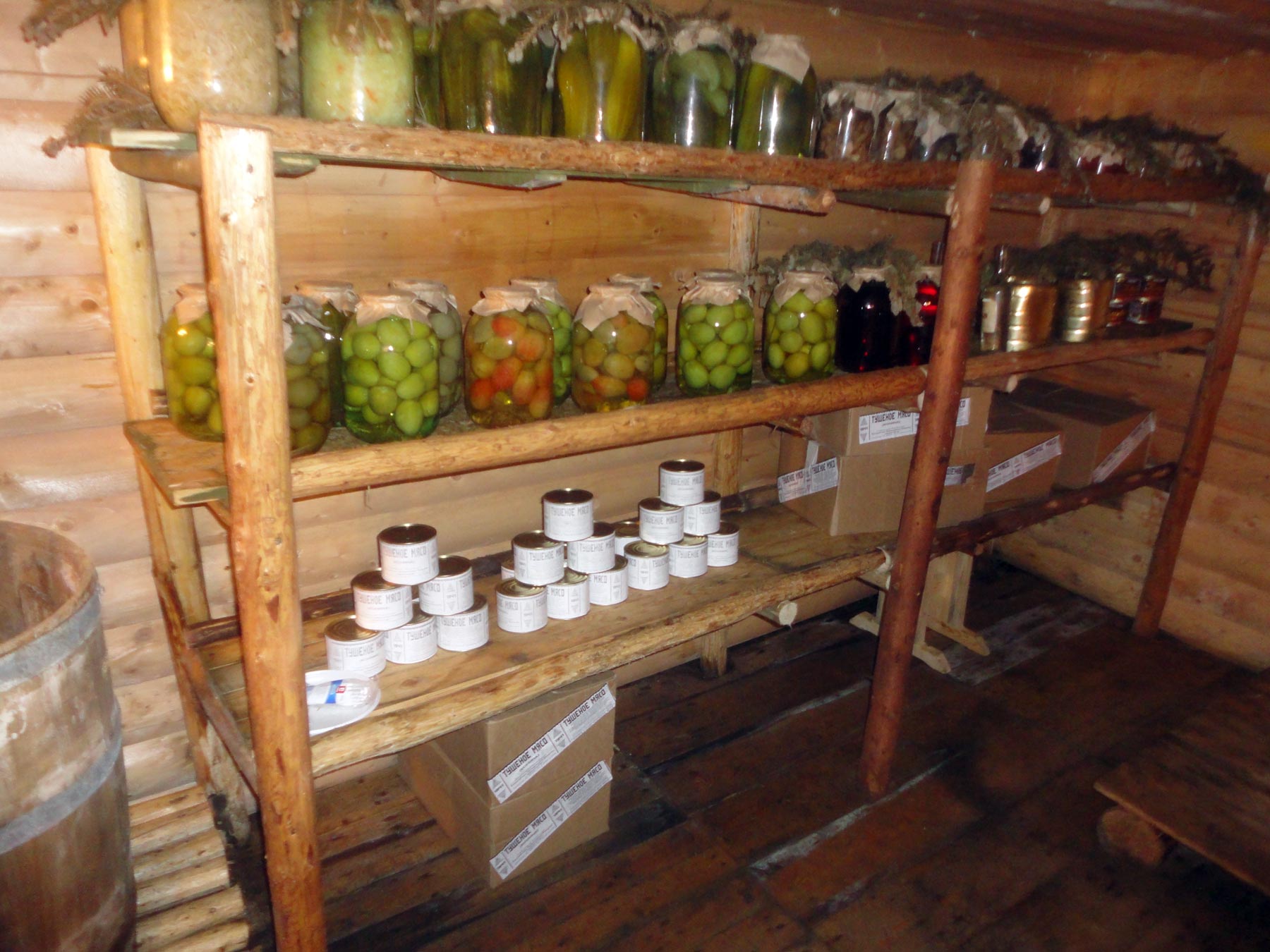Kubinka Patrior park, WW2 guerilla village
In the Patriot park area there are the special World War two re-enactment zone – “Partisan village” (derevnia)
Soviet partisans – an integral part of the anti-fascist resistance movement that fought the methods of guerrilla war with Germany and its allies in the occupied territories by the Soviet Union during the Great Patriotic War. The movement was coordinated and supervised by the Soviet authorities and was designed along the lines of the Red Army. The main purpose of the guerrilla war was the destruction of the front security system – a violation and communications, working its road and rail links (so-called “Rail war”) and others.
In total, in the years 1941-1944 in the occupied territory of the USSR acted 6200 guerrilla groups and connections, the number of partisans and underground fighters is estimated at 1 million people. More than 128 thousand. Partisans and underground fighters were awarded orders and medals of the USSR (248 of them became Heroes of the Soviet Union)
The anti-fascist movement of the Resistance on the territory of foreign countries took part more than 40 thousand citizens of the USSR
The main objectives of the guerrilla movement were set out in the Directive of People’s Commissars of the USSR and the Central Committee of the CPSU (b) “Party and government organizations frontline areas” on June 29, 1941 № 624 and the Decision of the Central Committee of the CPSU (b) on 18 July 1941 “On the organization of the struggle in the rear of the German troops. ” The most important areas of the fight behind enemy lines have been formulated in the order NKO Stalin on September 5, 1942 number 00189 “On the tasks of the guerrilla movement.”
The deployment of the guerrilla movement has played a prominent role created in 1941 4th NKVD depatment under the leadership of P.Sudoplatov. He was subject to separate motorized rifle brigade of special purpose of the NKVD of the USSR, which were formed from the reconnaissance and sabotage units, thrown into the rear of the enemy, who tried to organize or replenished guerrilla groups.
May 30, 1942 Central Headquarters of the partisan movement (- PK Ponomarenko in 1942-44 chief of staff) was created. Central headquarters were subordinated operationally republican and regional headquarters of the partisan movement, which led the secretaries or members of the Communist Party Central republics, territorial and regional committees. Creating a partisan movement staffs with sharp features and better communication with the “Big earth” gave guerrilla movement becoming more organized, ensure greater coherence of guerrilla forces and helped to improve their interaction with the troops.
Composition and organization of guerrilla forces, despite their diversity, have many similarities. The basic tactical unit was the detachment, usually numbering several dozen people, and then – to more than 200 fighters. During the war, many units were combined into a compound (team) number from a few hundred to several thousand people. The arms prevailed slight weapons (machine guns, hand guns, rifles, carbines, grenades), but many groups and compounds possessed mortars and heavy machine guns, and some – the artillery. All persons entering into partisan formations took guerrilla oath; in the units established strict military discipline.
Elements of guerilla warfare
Sabotage, destruction of the infrastructure of the enemy in any form (rail war, the destruction of communication lines, power lines, poisoning and destruction of water pipes, wells and so on. N.) Diversions occupied an important place in the activities of the guerrilla groups. They were a very effective way of disorganizing the enemy’s rear, the application of the loss and damage to the enemy without engaging him in combat engagement. Using a special diversionary technique, significant damage to the enemy could inflict small groups of partisans and even singles. During the war the Soviet partisans derailed trains about 18,000, of which 15,000 in 1943-1944.
Intelligence activities, including secret-service.
- Political activity and Bolshevik propaganda.
Guerrilla armies conducted extensive political work among the population of the occupied territories. - Combat assistance.
Guerrilla armies provided assistance to troops fighting the Workers ‘and Peasants’ Red Army. Since the beginning of the offensive of the Red Army, they tore the enemy troop movements, violating their organized waste and management. With the approach of the troops of the Red Army, they attacked from the rear and helped break the enemy defense, repel its counterattacks, encircle enemy forces, mastery of settlements, provided the open flanks of the advancing troops. - Destruction of the enemy personnel.
Elimination lzhepartizan, collaborators, and the heads of the Nazi administration. - Restoration and preservation of elements of Soviet rule in the occupied territories.
- Mobilization of fighting the population remaining in the occupied territory, and the union of residues surrounded by military units.
Learn more about partisan movement…
Partisan village living history structure
- partisan detachment commander blindage (HQ)
- political comissar blindage and soviet propaganda with the posters, maps, Lenin books
- radio communication center with the field radiostations
- field telephon communication center
- field typography
- club
- saboteurs, subversive school with NKVD instructor
- partisan dugouts with the interier
- sauna
- Smithy, economic yard
- Economic yard with animals (rabbits, hens, goats …)
- food storage, food supplies, all kind of WWII military traditional Russian food
- field bakery, fresh bread
Note that all military exhibits and even the food are from the real military stocks (the local real motorized division). The saboteur school is former military training school with all original WWII exhibits and in the soviet military training tradition you can touch all by your hands. You can test all traditional (and organic) military food such as military soup (borscht, cabbage soup etc.), porridge, baked potatoes (in their skins), pickled tomatoes, pickles (for long-term storage) and certainly vodka (according to the order of People’s Commissar of Defense). more precisely “Samogon” (moonshine) – homemade guerrillas vodka 🙂
Location
10 minutes by the special military mini-bus from CEC (each 20-25 minutes), the military restricted area inside of the forest.
How to visit, the entrance fee
You can use an integrated ticket for Tank Museum (your guide will register the ticket). Learn more
- combined tour: Kubinka tank museum + Patriot park with the English speaking guide
Check also the current facility to visit 1) the new halls with AV 2) outdoor exhibition with the modern military vehicles




